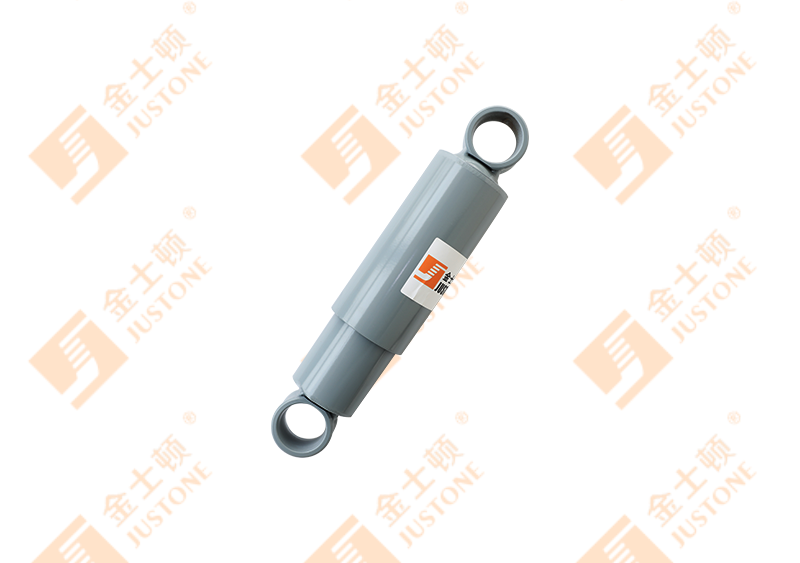Didn't find a product that suits you?
Contact us for the latest news.
In the design of heavy truck chassis shock absorbers, balancing comfort and handling is a complex and critical issue. There is often a certain contradiction between the two: improving comfort may reduce the vehicle's handling stability, while strengthening handling may sacrifice driving stability and riding experience. The following is a detailed analysis of how to find a balance in this contradiction:
1. Understand the core needs of comfort and handling
Comfort
Comfort is mainly reflected in reducing the impact of body vibration and impact on the driver and cargo, especially on uneven roads or long-term driving. It is usually achieved through the damping characteristics of the shock absorber, and soft damping can better absorb vibration.
Handling
Handling emphasizes the stability and responsiveness of the vehicle, especially when turning, accelerating or braking. Hard damping can restore the body posture faster, thereby improving handling performance.
The contradiction between the two is that although soft damping can provide better comfort, it may cause excessive body shaking and affect handling; while hard damping can improve handling, but it will make the vehicle appear too "hard" on bumpy roads, reducing comfort.
2. Balance through technical means
In order to find the best balance between comfort and handling, we can start from the following aspects:
(1) Optimize the damping characteristic curve
Nonlinear damping design
Use nonlinear damping characteristic curve to make the shock absorber show different damping forces under different road conditions. For example, softer damping is used to improve comfort when driving at low speed (such as urban roads), and it automatically switches to harder damping to enhance handling when driving at high speed or making sharp turns.
Segmented damping adjustment
Design a multi-stage damping valve inside the shock absorber to dynamically adjust the damping force according to the load and road conditions. For example, soft damping is used when the load is light, and harder damping is switched when the load is heavy or the road conditions are bad.
(2) Introduce intelligent adjustment technology
Electronic Control Shock Absorber (ECAS)
Use sensors to monitor vehicle speed, load, road conditions and body posture in real time, and dynamically adjust the damping force of the shock absorber through an electronic control system. This technology can flexibly switch between comfort and handling modes according to actual needs.
Adaptive suspension system
In combination with air suspension or other adjustable suspension systems, combined with the working status of the shock absorber, the vehicle height and suspension stiffness are adjusted in real time to find the best balance between comfort and handling.
(3) Optimize the shock absorber structure design
Choice of double-tube and single-tube shock absorbers
Double-tube shock absorbers are usually more suitable for scenes that focus on comfort because they can provide a smoother damping force; while single-tube shock absorbers are suitable for scenes that require higher handling due to their better heat dissipation performance. The appropriate structure type can be selected according to specific needs.
Piston valve plate design
By optimizing the shape, thickness and arrangement of the piston valve plate, different damping characteristics can be achieved during compression and rebound, thus taking into account both comfort and handling.
(4) Material and oil selection
High-performance shock absorber oil
Use low-viscosity, high-heat-resistant shock absorber oil to ensure stable damping characteristics under various working conditions while reducing performance fluctuations caused by temperature changes.
High-strength materials
Key components of shock absorbers (such as piston rods and cylinders) are made of high-strength steel or aluminum alloy to improve durability and response speed, thereby enhancing handling without affecting comfort.
3. Targeted design for application scenarios
Different usage scenarios have different weights for comfort and handling, so customized design is required for specific application scenarios:
Long-distance logistics transportation
For long-distance transportation vehicles, comfort is more important because drivers need to drive for a long time. By adopting soft damping design and intelligent adjustment technology, driving comfort can be prioritized, while handling can be moderately enhanced when driving at high speeds.
Mines or construction sites
In rugged terrain, handling may be a more important demand. At this time, a hard damping design can be selected, combined with an air suspension system to ensure the stability and safety of the vehicle under complex road conditions.
Urban delivery vehicles
Urban delivery vehicles need to take into account both comfort and handling because they need to start and stop frequently and turn, and reduce the vibration of the goods. Dynamic balance can be achieved through nonlinear damping design and intelligent adjustment technology.
Through scientific design and the application of intelligent technology, a dynamic balance between the two can be achieved to meet different working conditions and user needs.